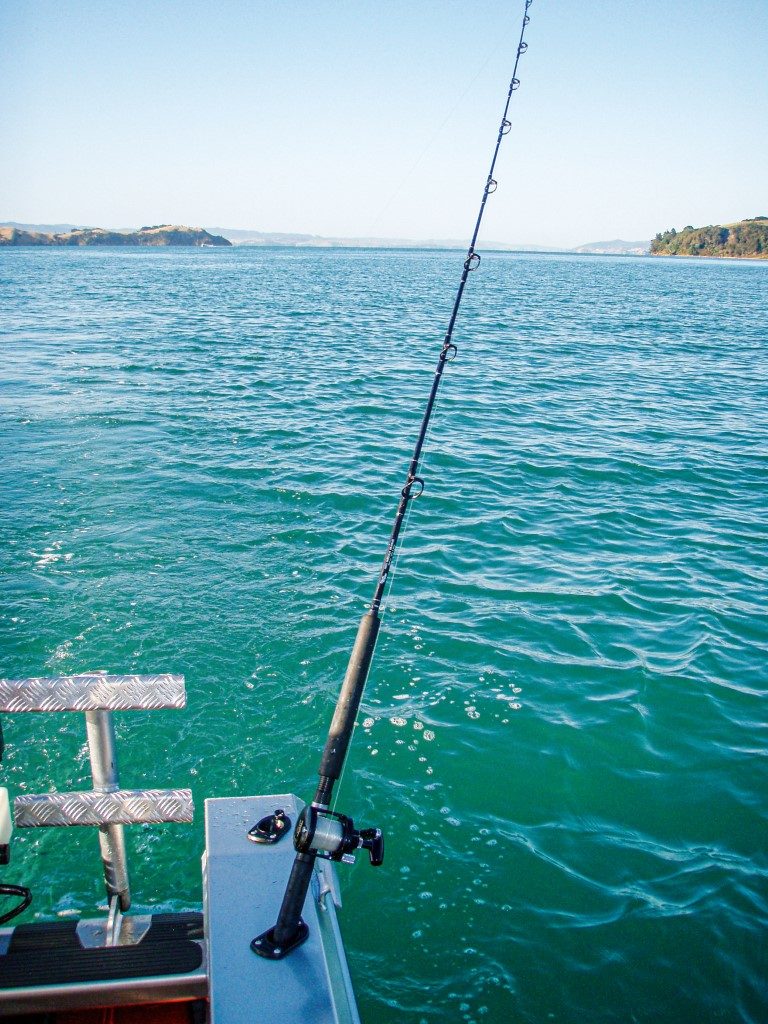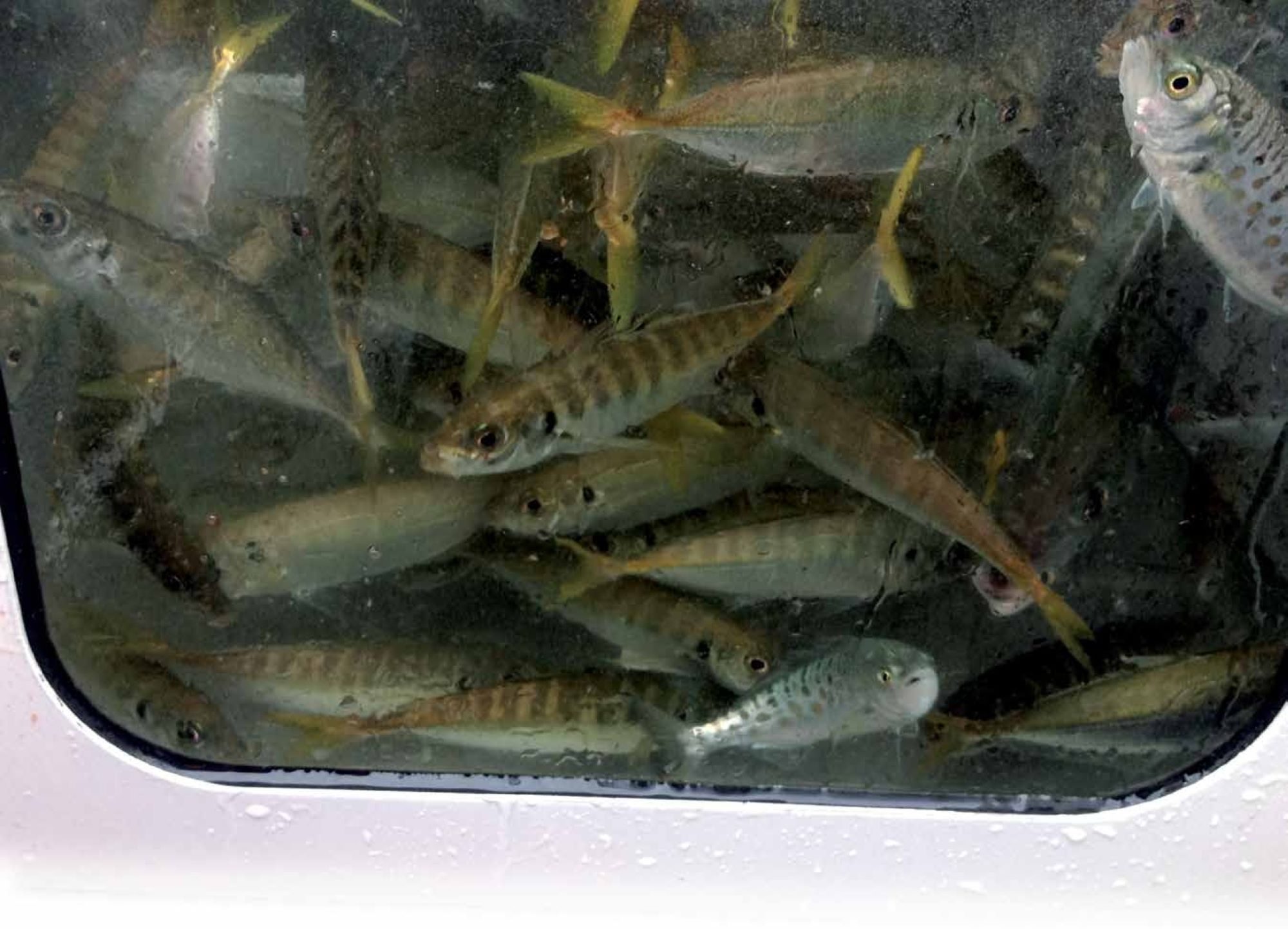

While recreational fishing can be a relaxing pastime, most successful anglers work hard to stay alert, relying on their senses to detect and react to bites, thereby turning lookers into keepers.
Whether you fish lures or natural bait, the importance of feel – hands on the rod and/or fingers on the line – can’t be under-emphasised. Vision – watching the line for any movement that may indicate a bite – is equally important. Lazy anglers miss fish. It is sometimes tempting to place your rod in the rod holder while waiting for a bite, but doing so is risky. You might easily miss the best bite of the day, or react too slowly to turn a bite into a hook-up. Subtle bites may escape your attention altogether. Although it’s true ‘Rod Holder’ catches some very good fish on occasions, he misses plenty as well – relying on him to fish for you is not only lazy, it will adversely affect your catch rate.
It’s almost always best to fish with the rod in hand. The only situations where using a rod holder is justified is when trolling a moving lure and certain types of bottom fishing with natural baits. In both cases the rod and reel do the work of hooking the fish.

But most fishing styles are active. Staying alert, managing your line to minimise slack and keeping in touch with your terminal tackle will greatly improve your success rate. This is true whether you fish artificial lures/baits or prefer natural bait.
Keeping in touch can be as simple as maintaining a relatively tight line between the rod and the bait/lure. How tight depends on the situation and how you are fishing. With a ledger rig, the line should be tight all the way to the sinker, even when the sinker is resting on the seafloor: you can give a biting fish a bit of slack by ‘bowing’ the rod tip as it turns away with the bait, so it’s easier to hook, but to feel bites the line needs to be tight.
Stray-line fishing is slightly different, although staying in touch is just as important. The whole idea of stray-line fishing is to present a bait as naturally as possible, as though it were falling through the water column or slowly drifting with the tide. The key is to feed out line from the reel at exactly the right speed – not so fast that you create a lot of slack, but not so slowly that a tight line impedes the natural descent of the bait.
Ideally you should be able to ‘feel’ the bait at all times, so that you can react when a fish picks it up. To do this, you must select the right sinker for the conditions, changing it whenever the conditions change (water depth, tidal flow, bait size etc).

Minimal weight is best for a more natural drift/fall, but don’t use too little or you will struggle to feel the bait through the line. Water pressure could also hold a lightly-weighted bait up in the water column, no matter how much line you let out.
If you can’t feel the bait touch down on the bottom, or you think you are feeding out more line than you should need to for the depth of water (taking into account the effects of current/ tide), you are not using enough lead.
When it comes to setting the hook, feel is important too. It’s easy to make the mistake of pulling a bait away from a biting fish. Reacting too quickly to a bite or over-reacting – striking too vigorously, for instance – can result in missed fish. Conversely, letting fish run too long with the bait can also result in lost fish, or fish that are deeply hooked.
Judging just how long to let a fish pull line off the spool before locking up the reel and striking comes with experience. The size of the bait should influence the decision – allow a bit more time for a large bait – but there’s no need to let a fish run for more than a few seconds at most, usually less time than that.
If you fish with recurved/circle hooks there’s little value in letting fish run with the bait, even when stray-lining: bowing the rod when a fish bites usually reduces resistance enough for the fish to turn with the bait: as the line tightens, the circle hook pulls into the corner of its mouth.

If you fish live baits, you’ll know how important touch and vision are to monitor what’s happening at the business end of the line. By watching the rod tip and/or fingering the line, you can tell not only whether your bait is lively (if it’s not, replace it), but also when it’s about to be monstered. An agitated live bait is usually one that’s about to be eaten, so any burst of activity from the bait is a signal for the angler to get ready for an imminent strike.
When the bite comes, judging how far you allow the fish to swim away before setting the hook depends on the size of the live bait (longer for larger) and the hook type, but also on what you feel in your gut. With some strikes, you’ll know the fish is hooked straight away and that there’s no need to free-spool the bait.
At other times it can take a while for a fish to properly eat the bait, so a little patience and an educated thumb on the spool is required. When to tighten up and set the hook is a judgement call, but when the line is running smoothly off the reel, maybe even accelerating, the time is usually right.
Lure fishers need to stay focussed and in touch with their gear too. Fishing artificials encompasses lots of different lure types and fishing techniques. Trolling or winding lures doesn’t require much attention from the angler since the fish hook themselves and the same is generally true for vertical jigging: a take on an upstroke or during a high-speed retrieve will rip the rod down.

But many jigging bites also come ‘on the drop’ as the lure is falling, so anglers must learn to react smartly to a slackening in the line, a sudden absence of weight or an accelerating spool to achieve a hook-up. This holds true for micro-jigs, slow-fall jigs, inchiku jigs and slow jigs as well: bites on the drop are common, so the angler has to react to any knock, bump or tug on the line.
Feel is super-important for slow jig fishing with sliders/ kabura jigs and similar styles. Bites can be very gentle and striking prematurely will result in missed fish. The trick is to keep slowly retrieving the lure after the first bites are felt, until the rod tip loads up and the fish hooks itself. It takes a bit of practice but you quickly get a feel for it.
For soft plastics, a combination of paying careful attention to what you can feel through the rod, an eagle-eyed focus on the line where it enters the water, watching for any movement that might indicate a bite, and lightning-fast reflexes bring fishing success. Many, many bites come as soft plastics are falling through the water column and these can be difficult to detect.
Line control is important – not too slack and not too tight, so the lure can still fall naturally – but so too is the almost sixth sense that tells you to strike NOW, perhaps in response to the slightest ‘tick’ transmitting up the line or a hint of movement in the line where it meets the water. Staying in good touch also lets you feel when the soft bait touches the bottom, so you know when to start working it back towards the boat.
Just like when fishing natural baits, adjusting the amount of weight to suit the conditions, water depth and bait size are important with soft baits: too little weight and you’ll lose contact with the bait, which also won’t get down to the fish; too much weight and the lure will descend too quickly, looking unnatural and allowing less time for fish to intercept it on the drop.




